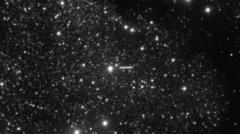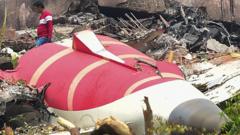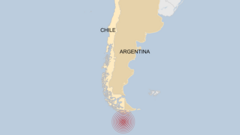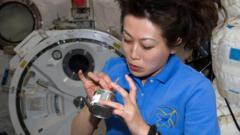The Vera C. Rubin Observatory, situated in the serene Andean landscape of Chile, has taken a monumental step by revealing its first mesmerizing celestial images. The observatory's initial highlights feature the Trifid and Lagoon nebulae, showcasing vibrant gas and dust clouds, unveiling some of the universe's most star-rich regions located around 9,000 light years from Earth.
This state-of-the-art facility is armed with the world’s most powerful digital camera, an impressive 3,200-megapixel device, which allows for extraordinary astronomical observations. Its potential to unearth new celestial bodies, such as a speculated ninth planet in our solar system, is keenly anticipated. In its first operational year, the telescope aims to revolutionize our understanding of the universe by monitoring transient celestial objects, aiding in the search for hazardous Near-Earth objects, and delving deep into the enigmatic nature of dark matter.
Designed for a ten-year mission, the observatory intends to continuously capture images of the southern night sky every three nights. "I have been working towards this for 25 years, and we’ve dreamt of building a facility like this," reflects Professor Catherine Heymans, the Astronomer Royal for Scotland.
Located on Cerro Pachón – known for its optimal observational conditions of high altitude, dry air, and dark skies – the observatory's operations will maintain stringent measures to keep light pollution at bay. Inside, careful protocols enhance the effectiveness of the telescope, ensuring that all stray lights remain eliminated for interference-free astronomical imaging.
The practical design of the telescope permits high-capacity light collection, enabling it to observe objects from distant cosmic eras. A highlight of its engineering is the unique three-mirror design allowing for high-resolution imaging. The camera’s performance is so advanced that it could capture minute details, exemplified by the ability to photograph a golf ball on the Moon.
As the observatory begins its Legacy Survey of Space and Time, scientists worldwide brace to delve into the enormous data stream, which is expected to generate around 10 million alerts per night. The inquiries will focus on mapping transient objects, understanding the formation of our galaxy, and shedding light on the lore behind dark matter and the universe's origins. "This effort will transform our capabilities to explore the galaxy," stated Professor Alis Deason from Durham University, who will focus on defining the Milky Way’s boundaries.
With the Vera Rubin Observatory now operational, astronomers anticipate uncovering hidden gems and solving longstanding cosmic puzzles, providing humanity with a deeper connection to the cosmos and enriching our understanding of our celestial home.


















